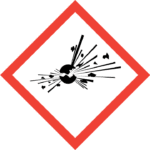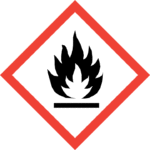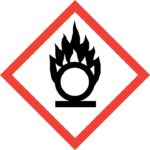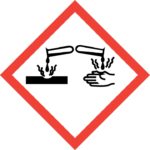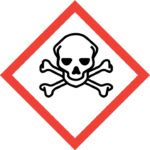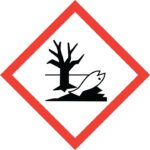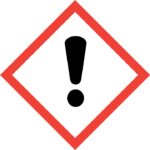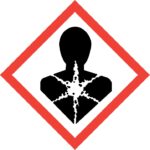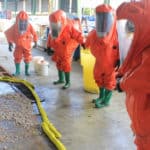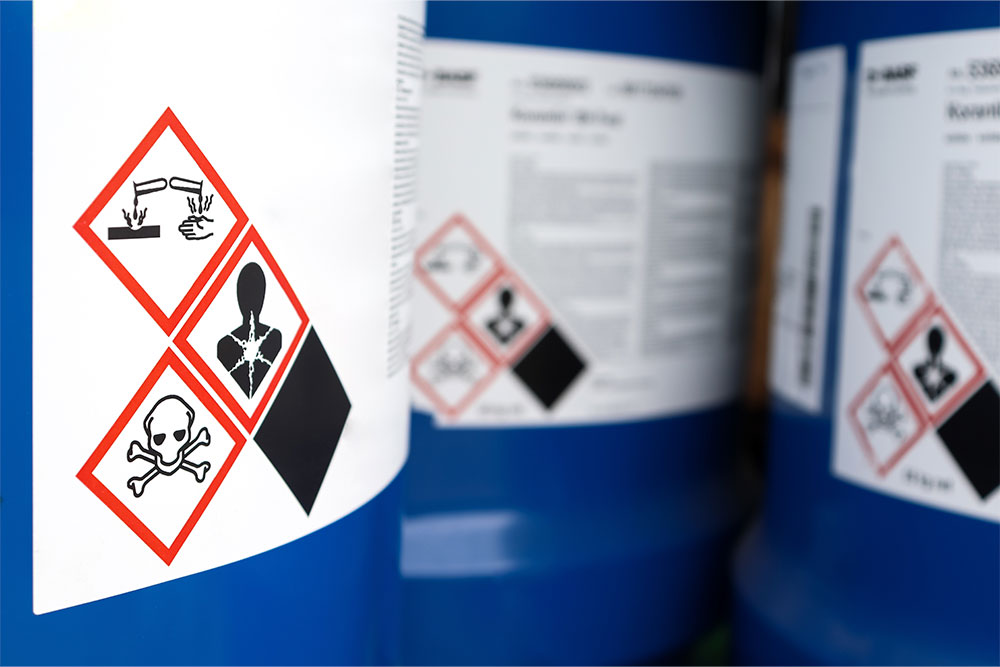
If you work with hazardous substances, you’ve encountered numerous COSHH hazard symbols during your daily duties. COSHH hazard symbols are pictograms displayed on the packaging of substances that can be harmful to health or the environment. Their purpose is to provide fast, digestible information on the hazards of a particular substance.
Every person who works with hazardous substances should be able to recognise and understand the meaning of the various COSHH hazard symbols. We’ve put together a quick guide to provide a clear overview of the COSHH symbols and their meanings.
What Does COSHH Mean?
COSHH stands for the Control of Substances Hazardous to Health Regulations, which were introduced into UK legislation in 1988 and amended in 2002.
The main aim of COSHH is to ensure that employers protect their workers from injury or ill health associated with the handling of hazardous substances.
Violating COSHH rules, whether by an employer or an employee, constitutes an offence that can lead to financial penalties.
COSHH covers a wide range of substances, including solids, liquids, dust, fumes, fibres, vapours, particles, gases, mists and biological agents. If a substance poses a health risk, is combustible or explosive, or may damage the environment, then it falls within the COSHH regulations.
COSHH also covers hazards, including damage to the lungs, nose, mouth, skin, internal organs, eyes, central nervous system or genes.
COSHH Training
Our COSHH Training course provides basic awareness to trainees to help them identify the dangers and adopt safe working practices whilst working with hazardous substances, as well as, comply with the law.
What are the COSHH Symbols?
COSHH symbols are hazard pictograms used to alert people to the possible risks associated with a chemical or substance, according to the Health and Safety Executive (HSE).
The current COSHH symbols are black pictograms on a white background with a red diamond border.
Note: The original COSHH symbols that featured a square orange background may still be found. These symbols were defined under the 2009 Chemicals (Hazard Information and Packaging for Supply) Regulations (CHIP). However, since then, COSHH symbols have been updated to include European regulations related to the classification, labelling and packaging of substances and mixtures (CLP Regulations). The old range and black symbols were officially replaced by newer symbols in 2017.
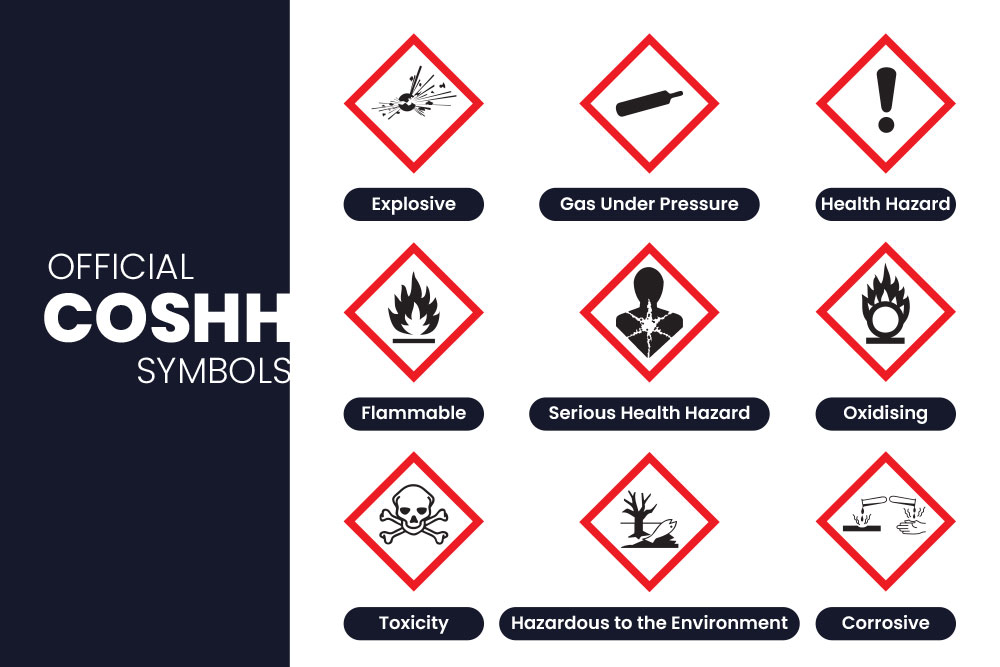
List of COSHH Hazard Symbols
Although the wording of the names of the symbols can sometimes differ, there are nine accepted types of official COSHH symbols:
- Explosive
- Flammable
- Oxidising
- Corrosive
- Toxicity
- Hazardous to the Environment
- Health Hazard/Hazardous to the Ozone Layer
- Serious Health Hazard
- Gas Under Pressure
1. Explosive
Explosive substances are identified by a pictogram of an exploding bomb. This signifies that a substance may explode under certain conditions. The substance may be inherently unstable, may explode in fire, or may pose a mass explosion hazard, a severe projection hazard, or a fire, blast or projection hazard.
Meanings:
- Unstable explosive
- Explosive; mass explosion hazard
- Explosive; severe projection hazard
- Explosive; fire, blast or projection hazard
- May mass explode in fire
2. Flammable
Flammable substances will show the illustration of a flame. This symbol is used on any substance that may catch fire if it comes in contact with air or comes in contact with an ignition source. It is also used for substances that have low flash points or that may ignite when in contact with water. Flammable substances can be solids, liquids or gases.
Meanings:
- Extremely flammable gas
- Flammable gas
- Extremely flammable aerosol
- Flammable aerosol
- Highly flammable liquid and vapour
- Flammable liquid and vapour
- Flammable solid
3. Oxidising
A flame over a circle resting on a line is the oxidising symbol. Any chemicals or preparations that may cause an exothermic reaction when in contact with another chemical will carry this symbol. These substances can cause an explosion, start a fire or increase the intensity of an existing fire. Oxygen used for medical purposes or in most types of bleach is a common oxidiser.
Meanings:
- May cause or intensify fire; oxidiser.
- May cause fire or explosion; strong oxidiser.
4. Corrosive
Corrosive substances will carry a COSHH symbol that has two test tubes pouring a liquid onto a human hand and a rectangular block. Both the block and the hand are shown to be reacting to the substance. Corrosive substances will severely damage living tissue or other materials upon contact. Drain cleaners, chemicals used to develop photographs and industrial pesticides can often be highly corrosive.
Meanings:
- May be corrosive to metals
- Causes severe skin burns and eye damage
5. Toxicity
Skull and crossbones are featured on the COSHH toxicity symbol. The packaging of any substance that is either toxic or fatal when it comes into contact with the skin, is inhaled, or swallowed will display this symbol. Even low-level exposure to these substances can be severely damaging to health.
Meanings:
- Fatal if swallowed
- Fatal in contact with skin
- Fatal if inhaled
- Toxic if swallowed
- Toxic when in contact with skin
- Toxic if inhaled
6. Hazardous to the Environment
Substances that pose either an immediate or delayed hazard to the environment are designated by a picture of a landscape with a dead tree and a dying fish. These substances can cause damage to one or more components of the environment, either immediately or over time. This symbol is often found on pesticides, petrol, turpentine, and other chemicals.
Meanings:
- Very toxic to aquatic life with long-lasting effects
- Toxic to aquatic life with long-lasting effects
7. Health Hazards/Hazardous to the Ozone Layer
A large exclamation mark indicates a substance is hazardous to health. This symbol is also used to signify that caution must be used when handling this substance. It replaces the previous symbols used to classify substances that can be harmful to health or are irritants.
If a substance with this designation is swallowed, inhaled or comes into contact with skin it may cause skin reactions, allergies, drowsiness, dizziness, eye irritations, or may harm public health by damaging the earth’s ozone layer.
Meanings:
- May cause respiratory irritation
- May cause drowsiness or dizziness
- May cause an allergic skin reaction
- Causes serious eye irritation
- Causes skin irritation
- Harmful if swallowed
- Harmful when in contact with skin
- Harmful if inhaled
- Harms public health and the environment by destroying ozone in the upper atmosphere
8. Serious Health Hazards
A human figure with white lines forming a six-pointed star on its chest is used to designate any substance that can cause long-term health issues. Substances that carry this symbol can also be fatal if ingested or inhaled.
Short-term or prolonged exposure to substances with this designation can cause serious health problems. The harm caused by these substances can include cancer, organ damage, genetic defects, respiratory problems, asthma or damage to fertility or an unborn child.
Meanings:
- May be fatal if swallowed and enters airways
- Causes damage to organs
- May cause damage to organs
- May damage fertility or the unborn child
- Suspected of damaging fertility or the unborn child
- May cause cancer
- Suspected of causing cancer
- May cause genetic defects
- Suspected of causing genetic defects
- May cause allergy or asthma symptoms or breathing difficulties if inhaled
9. Gas Under Pressure
A gas cylinder is used to depict gas under pressure. Any container that is filled with pressurised gas should carry this symbol. Some forms of pressurised gas may explode when heated. Refrigerated gas may result in cryogenic injuries and burns. The gas under pressure symbol is the only symbol that was not represented under the previous classification system.
Meanings:
- Contains gas under pressure; may explode if heated.
- Contains refrigerated gas; may cause cryogenic burns or injury.
Where to Get More Training
All employees should learn safe methods of working with hazardous substances. Advanced COSHH training will ensure that you avoid injuries or fatalities when handling hazardous materials.
If you are interested in different health and safety trainings, then you can find a wide range of online courses on the Human Focus website. Human Focus hosts a range of specialised COSHH courses, including:
All courses can be undertaken at your convenience and are fully certified and accredited by reputable bodies such as the Royal Society for the Prevention of Accidents (ROSPA).
